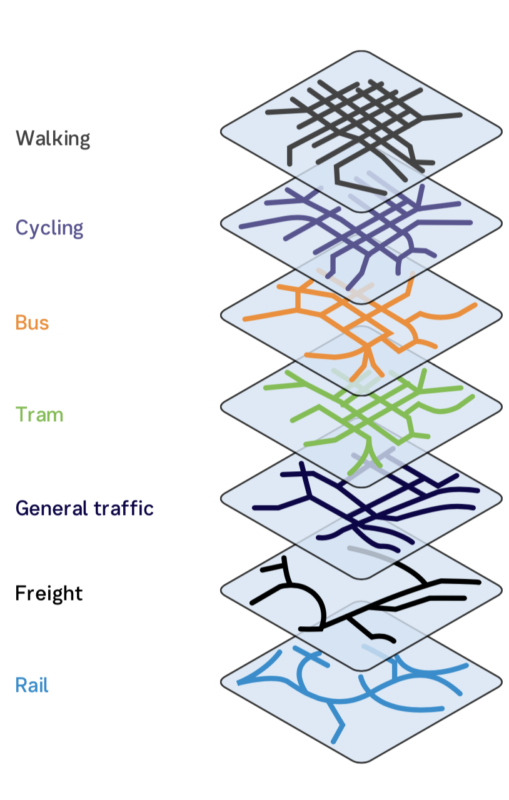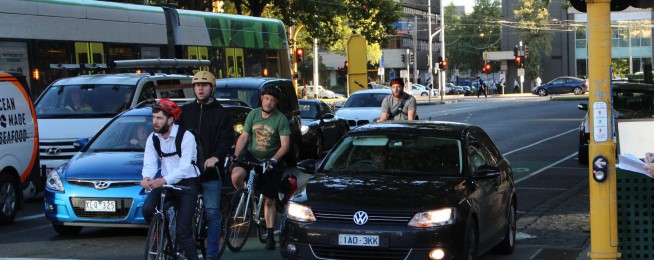Victoria could soon have a fresh approach to transport planning that would result in better connected roads and public transport, more attractive and economically viable neighbourhoods, and importantly, a compelling mesh of easy-to-ride bike routes.
Called 'Movement and Place' the new thinking recognises that roads are not just for motor vehicles, but are placed in context that includes the local environment, commercial and social activities, and a range of road users from heavy freight to children on scooters.
Until now our transport planning has tended to set these forces against each other in an I win-you lose brawl for valuable space and time on the street.
Those wanting to minimise motor vehicle travel time would find themselves at the throats of those who wanted a lively, safe shopping centre or well connected bike routes for healthy, active travel to work and education.
Movement and Place aims to move us on from that model by providing a planning framework that considers the important value of places and activities along side the necessity of moving people and goods.
It recognises that all streets can’t be all things for all people, and that we need a language and an approach that enables appropriate functions and priorities to be established.
It works by giving movement and places classifications ranging from 1 to 5. For example an M1 would be assigned to a route for the mass movement of people and freight at a state or national level. A P1 would be a place of national significance while a P5 would have local significance.
Examples of how these definitions work are in the latest Movement and Place document. Well worth a read although some sections are technical.
The classifications can help explain the function of links and places in the network, and guide their future development.
Within the movement category, other modes including cycling are also classified. Bike routes will be C1 to C5 with a score based on level of stress determined by infrastructure and speed limits.
The C1 and C2 bike routes, classified under Movement and Place, are expected to be revealed this year.
Movement and Place was developed by the Department of Transport and VicRoads.
Some more from the document:
"Fundamental to movement and place thinking is recognising that streets perform multiple functions. Transport links not only move people from A to B, they also serve as key places and destinations in their own right.
"There is a natural tension between these two functions. As a movement corridor, every link aims to minimise travel time and keep people and goods moving. Contrarily as a destination, it aims to increase visitor dwell time.
"Not all streets can be popular destinations, just as not all streets can prioritise vehicle movement. Sometimes streets and roads change functions several times along the way. It is important to recognise the competing demands between movement and place on our roads and streets. Finding the right balance between the two is fundamental to integrated transport planning.
"This way of thinking means that when we plan and develop the transport network, we need to consider the breadth of community needs, expectations and aspirations for the places they live and the roads and streets they pass through."
See the latest Movement and Place document here.

Become our friend
Find out more about Bicycle Network and support us in making it easier for people to ride bikes.


